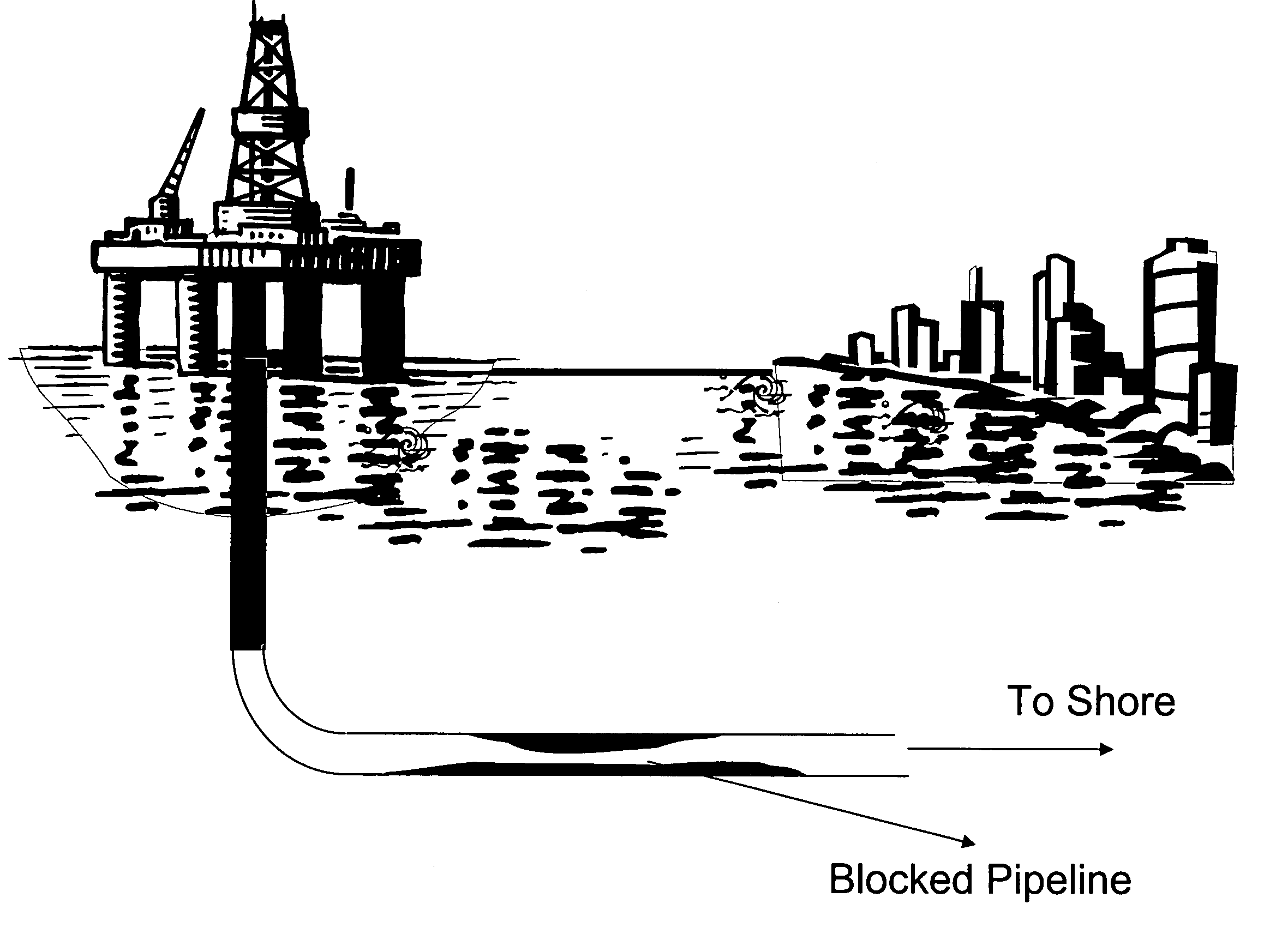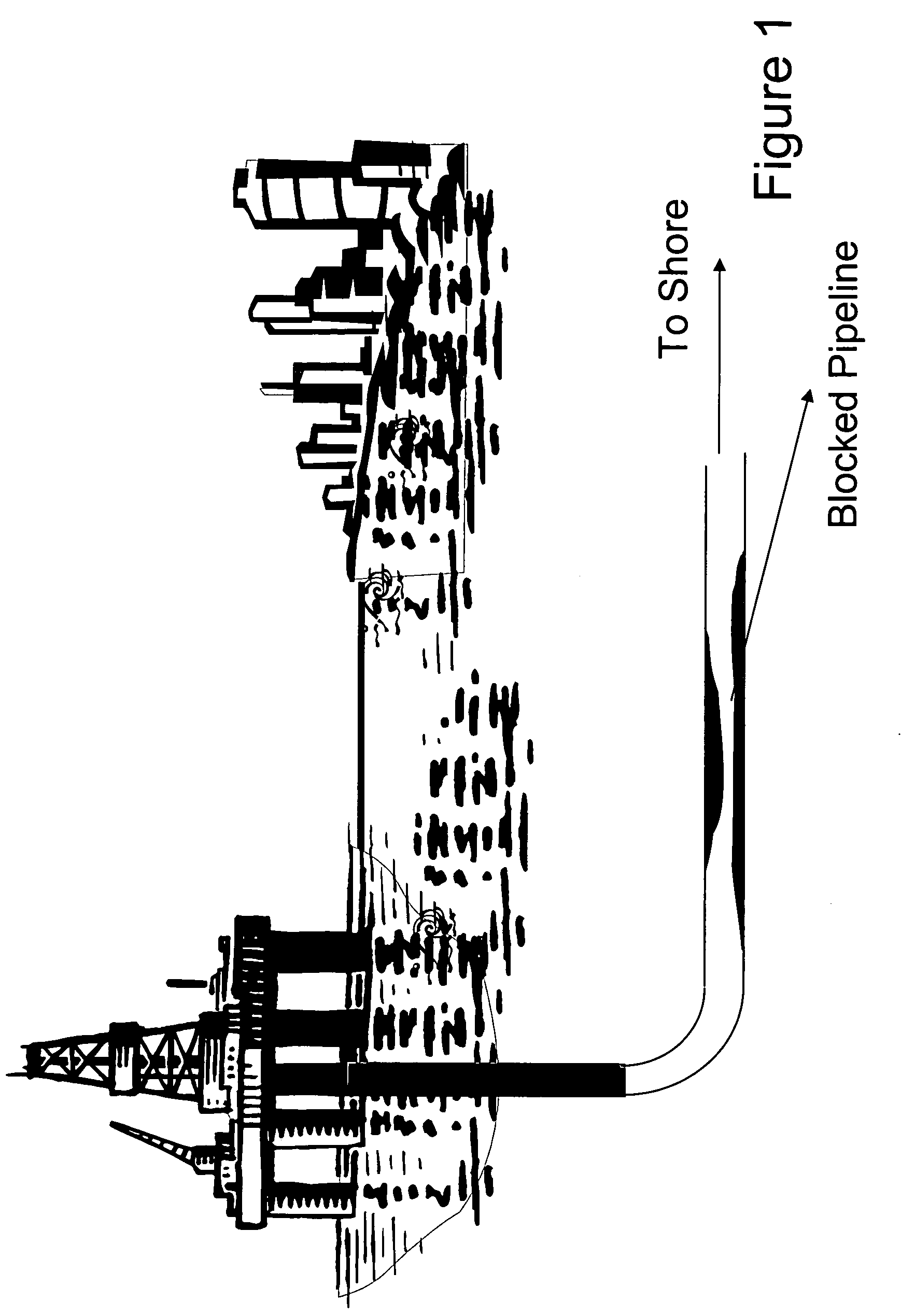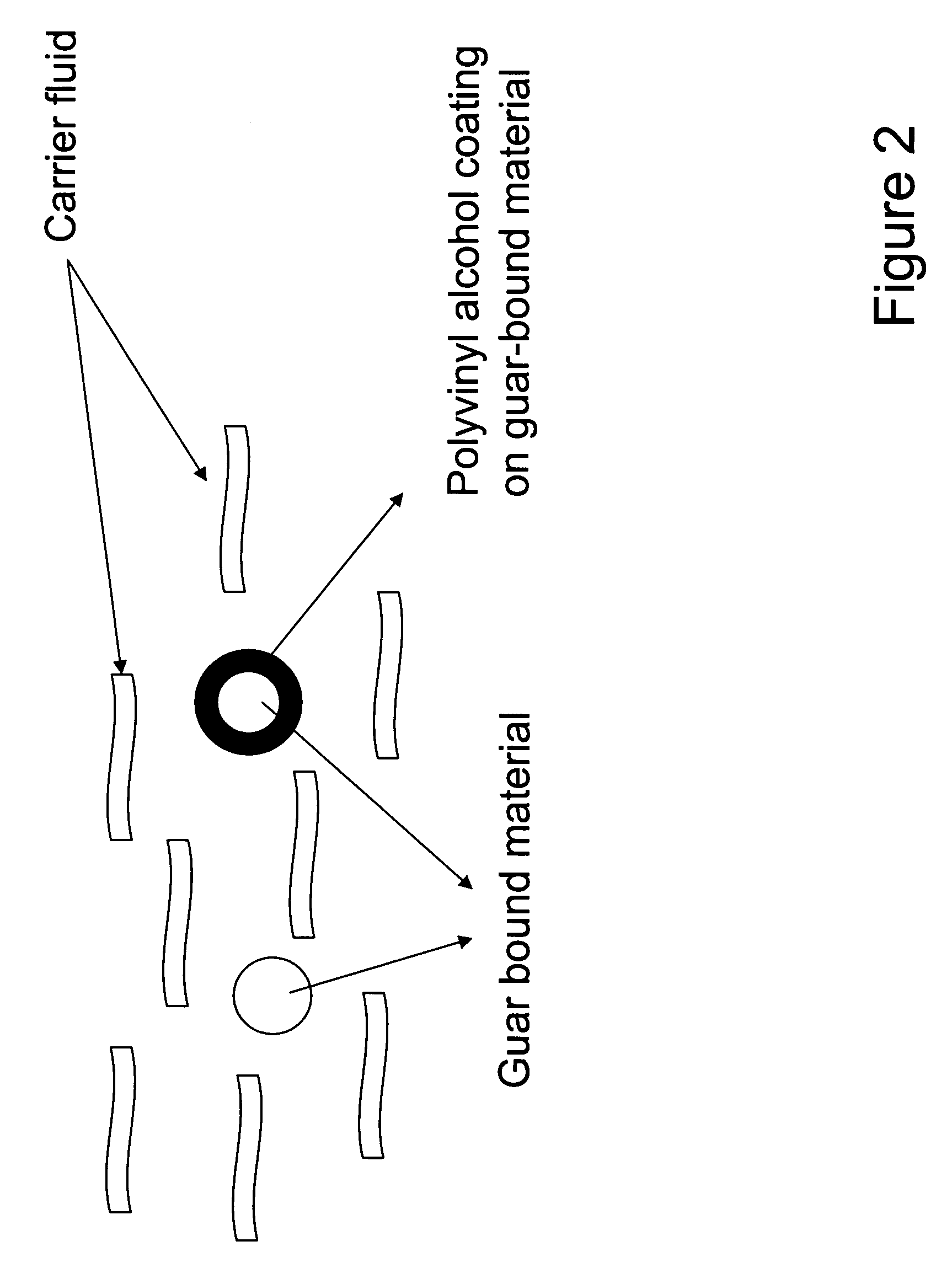Methods and compositions for thermally treating a conduit used for hydrocarbon production or transmission to help remove paraffin wax buildup
a technology of hydrocarbon production or transmission, which is applied in the direction of insulation, physical/chemical process catalysts, wellbore/well accessories, etc., can solve the problems of lowering oil production, obstructing flow, and interfering with transportation
- Summary
- Abstract
- Description
- Claims
- Application Information
AI Technical Summary
Benefits of technology
Problems solved by technology
Method used
Image
Examples
Embodiment Construction
[0058]The invention provides for new methods for controlling an exothermic reaction in a treatment fluid, which can be used to facilitate the dissolution and cleanup of paraffin wax buildup in conduits used for hydrocarbon production or transmission. This paraffin deposition leads to reduced crude oil flow and under extreme conditions leads to complete blockage of the pipelines, as previously discussed and as illustrated in FIG. 1.
[0059]“Wax” is a low-melting organic mixture or compound of relatively high molecular weight, solid at room temperature and generally similar in composition to fats and oils except that it contains no glycerides. Some are hydrocarbons; others are esters of fatty acids and alcohols. They are classed among the lipids. Waxes are thermoplastic, but since they are not high polymers, are not considered in the family of plastics. Common properties are water repellency, smooth texture, low toxicity, freedom from objectionable odor and color. They are combustible a...
PUM
| Property | Measurement | Unit |
|---|---|---|
| temperature | aaaaa | aaaaa |
| temperatures | aaaaa | aaaaa |
| formation temperatures | aaaaa | aaaaa |
Abstract
Description
Claims
Application Information
 Login to View More
Login to View More - R&D
- Intellectual Property
- Life Sciences
- Materials
- Tech Scout
- Unparalleled Data Quality
- Higher Quality Content
- 60% Fewer Hallucinations
Browse by: Latest US Patents, China's latest patents, Technical Efficacy Thesaurus, Application Domain, Technology Topic, Popular Technical Reports.
© 2025 PatSnap. All rights reserved.Legal|Privacy policy|Modern Slavery Act Transparency Statement|Sitemap|About US| Contact US: help@patsnap.com



